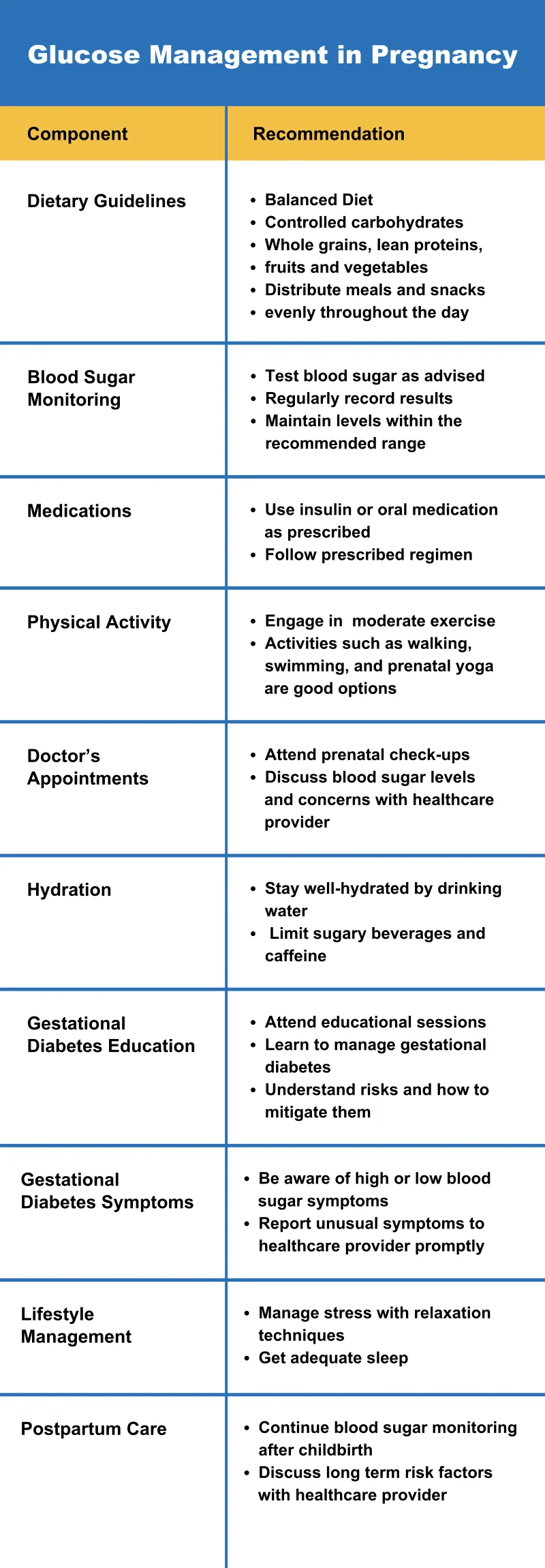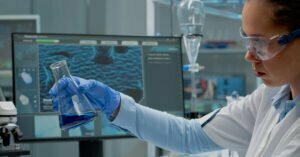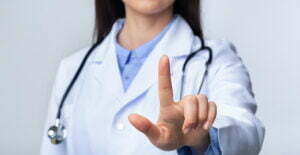Prenatal care is an essential aspect of ensuring a healthy pregnancy for both the mother and the baby. One of the critical factors that need to be monitored and managed during pregnancy is blood sugar levels. Maintaining normal blood sugar levels is crucial to prevent gestational diabetes, which is a type of diabetes that develops during pregnancy.
Remote patient monitoring (RPM) is an advancement in healthcare that enables pregnant women to track their blood sugar levels and other health parameters from the comfort of their home. When combined with a comprehensive normal blood sugar levels chart, RPM provides a powerful tool for prenatal care, especially for gestational diabetes.
In this article, we’ll discuss the importance of prenatal care and the role of RPM and a normal blood sugar levels chart in maximizing prenatal care for pregnant women.
What is Gestational Diabetes?
Gestational diabetes, also known as diabetes during pregnancy or gestational diabetes mellitus (GDM), is a type of diabetes that develops in pregnant women who have never had diabetes before. It is estimated that GDM affects approximately 2-10% of all pregnancies, and it is a condition that needs to be closely monitored and managed to avoid any adverse effects on the mother and the baby.
GDM occurs when the body becomes less sensitive to insulin, the hormone that regulates blood sugar levels. As a result, blood glucose levels may become too high, leading to an increased risk of complications such as pre-eclampsia, preterm delivery, and macrosomia (having a large baby).
Women diagnosed with GDM have an increased risk of developing type 2 diabetes later in life. This is why it is essential to manage GDM effectively during pregnancy and to adopt healthy habits such as a balanced diet and physical activity to help reduce the risk of developing type 2 diabetes.
Diagnosis of GDM typically occurs between 24 and 28 weeks of pregnancy through an oral glucose tolerance test (OGTT), which measures the body’s ability to handle glucose. The OGTT involves drinking a glucose solution and then having a blood test to measure the glucose level one hour after drinking the solution. If the results show that the glucose level is higher than normal, the woman may be diagnosed with GDM.
Now you understand why in pregnancy, managing blood sugar levels is of utmost importance for both the well-being of the mother and the baby. This chart outlines key components and recommendations for effective glucose management during this special time.

Remember, individual needs may vary, so it’s essential to consult your healthcare provider for personalized guidance and monitoring. Staying on top of these guidelines can help ensure a healthy and successful pregnancy journey.
Normal Blood Sugar Levels During Pregnancy

It’s important to note that these are general guidelines and individual target levels may vary based on factors such as personal medical history and the advice of a healthcare provider. Pregnant women with a history of diabetes or gestational diabetes may have different target levels for blood sugar control. It’s always best to work with a healthcare provider to establish and maintain appropriate blood sugar levels during pregnancy.
How To Maintain Optimal Blood Sugar Levels During Pregnancy
Maintaining optimal blood sugar levels during pregnancy is essential for a healthy mother and baby. These recommended glucose goals provide a general framework to aim for.

While this may be quite straightforward and generally applicable for everyone, it’s important to recognize that individual health factors may influence these targets. Consult with your healthcare provider for personalized glucose goals tailored to your specific needs, ensuring a smooth and healthy journey through pregnancy.
How Can Remote Patient Monitoring Help Monitor Blood Chart?
RPM is a tool that can help pregnant women manage their blood sugar levels and optimize prenatal care. RPM allows for continuous monitoring of blood sugar levels without the need for frequent in-person visits to an HCP. RPM is beneficial for women with high-risk pregnancy due to comorbidities such as gestational diabetes, as it enables them to monitor their blood sugar levels and respond to any changes in real-time.
A comprehensive normal blood sugar levels chart for pregnancy is an essential component of RPM. This chart provides guidelines for what constitutes normal blood sugar levels at various stages of pregnancy and after meals. By using this chart, women can identify patterns in their blood sugar levels and work with their HCP to adjust their treatment plan as needed.
For example, a normal blood sugar levels chart can help women with gestational diabetes determine if their glucose levels are too high or too low after eating. This information can be used to make changes to the meal plan, such as increasing the number of healthy carbohydrates and reducing the amount of added sugar.
Managing Gestational Diabetes through Diet and Exercise
In addition to RPM and the use of a normal blood sugar levels chart, a balanced diet and physical activity are important components of managing gestational diabetes.
- Balanced diet: includes a variety of healthy carbohydrates, such as fruits, vegetables, and whole grains. It is also important to limit the amount of added sugars and saturated fats.
- Physical activity: such as moderate-intensity exercise, can help improve insulin sensitivity and lower blood sugar levels. Women with gestational diabetes should aim for at least 30 minutes of moderate-intensity physical activity most days of the week. However, it is important to check with a HCP before starting any new exercise program, especially if the woman has any medical conditions or complications during pregnancy.
The Role of Blood Tests in Prenatal Care
Blood tests are a critical part of prenatal care for women with gestational diabetes. Regular monitoring of blood sugar levels helps to determine if the woman’s current management plan is working and if any adjustments need to be made. Blood tests can also identify any potential complications that may arise during pregnancy.
The most commonly used blood tests for gestational diabetes
- Oral Glucose Tolerance Test (OGTT) Simplification: There’s a move toward simplifying the OGTT, which traditionally involves fasting and multiple blood draws. Recent innovations explore single-sample diagnostic tests, making the process more convenient for pregnant women.
- Continuous Glucose Monitoring (CGM): CGM technology, originally developed for managing diabetes, is being adapted for GDM diagnosis. It provides a continuous stream of blood glucose data, offering a more comprehensive view of glucose control.
- Hemoglobin A1c (HbA1c): HbA1c, traditionally used to diagnose type 2 diabetes, is now being studied for its potential in identifying GDM. Its long-term glucose assessment may provide a new perspective on diagnosing the condition.
It is important for women with gestational diabetes to keep their blood sugar levels within the normal range, as high blood sugar levels can increase the risk of complications during pregnancy, such as pre-eclampsia, premature labor, and macrosomia (a condition where the baby is larger than average).
DrKumo Remote Patient Monitoring Solutions for Maximizing Prenatal Care
One of the primary challenges that pregnant individuals face is the monitoring of their blood sugar levels, especially when dealing with gestational diabetes. Thankfully, RPM technology offers a solution that empowers expectant parents to monitor their blood sugar levels effectively from the convenience of their homes all the while helping with chronic pain management during pregnancy as well as helping with prenatal infection prevention.
At DrKumo, we pride ourselves on being leaders in the field of RPM. Our comprehensive solution is designed to efficiently manage gestational diabetes during pregnancy. With DrKumo’s RPM technology, you can now monitor your blood sugar levels without leaving your home.
Our solution leverages a state-of-the-art, HIPAA-compliant, mobile-enabled, continuous real-time monitoring system, backed by an advanced AI/ML engine. This cutting-edge technology offers real-time insights into your blood sugar levels and provides healthcare professionals with the data they need for timely intervention.
Our user-friendly solution can be accessed from anywhere, making DrKumo a game-changer in how expectant parents access top-quality healthcare during pregnancy. Our innovative and technology-driven approach has positioned us as the preferred choice for pregnant individuals and healthcare professionals seeking effective solutions in prenatal care.
Frequently Asked Questions
What are the typical blood sugar levels during pregnancy, and how do they vary from normal levels?
During pregnancy, fasting blood sugar levels should be within 70-95 mg/dL, whereas post-meal levels should ideally range from 100-120 mg/dL. These levels can vary from non-pregnant norms and are crucial for a healthy pregnancy.
What role does the Normal Blood Sugar Levels Chart play in prenatal care?
The Normal Blood Sugar Levels Chart is a reference tool that helps both expectant mothers and healthcare providers understand the target ranges for blood sugar levels during pregnancy. It serves as a guide for managing and maintaining healthy glucose levels.
Can the Normal Blood Sugar Levels Chart be customized based on individual health factors?
Yes, individual factors like medical history can influence target levels. It’s essential for pregnant individuals to collaborate with healthcare providers to establish personalized blood sugar goals that best suit their unique needs.
Are there any risks associated with low blood sugar levels during pregnancy?
Low blood sugar (hypoglycemia) can also pose risks during pregnancy. It may lead to dizziness, fainting, or other complications. That’s why it’s essential to maintain a balance and work with your healthcare provider to manage your blood sugar effectively.
Are there any recent advances in diagnosing gestational diabetes that pregnant individuals should be aware of?
Yes, innovations such as simplified Oral Glucose Tolerance Tests (OGTT) and Continuous Glucose Monitoring (CGM) technology are making the diagnosis process more convenient and informative.
Can the management of gestational diabetes impact the long-term health of pregnant individuals?
Effectively managing gestational diabetes can lower the risk of developing type 2 diabetes later in life. It promotes long-term health and ensures a safe and healthy birth for both the mother and baby.
Is gestational diabetes temporary, or can it lead to type 2 diabetes later in life?
Gestational diabetes is typically temporary and often resolves after childbirth. However, women with a history of gestational diabetes have an increased risk of developing type 2 diabetes later in life. Regular monitoring and a healthy lifestyle can help reduce this risk.
How can healthcare providers integrate RPM technology into their practices to enhance prenatal care?
Healthcare providers can join the RPM revolution by incorporating technology like DrKumo’s into their practice. This provides real-time, comprehensive monitoring for patients with gestational diabetes, enhancing the quality of care.
Is it essential to consult a healthcare provider before making changes to one’s health during pregnancy?
Yes, it’s crucial to consult with a healthcare provider before making any changes to one’s health during pregnancy. Healthcare providers can offer guidance and recommendations tailored to individual needs and circumstances.
Takeaways
Maximizing prenatal care is essential for the well-being of both mother and baby. Through a combination of RPM and a comprehensive blood sugar levels chart, healthcare providers and expectant mothers can collaboratively manage gestational diabetes, ensuring a healthy pregnancy. Understanding the fundamentals of gestational diabetes, including risk factors, symptoms, and the significance of a balanced diet and physical activity, is crucial.
Blood tests are pivotal for diagnosing and managing gestational diabetes, allowing healthcare providers to monitor both mother and baby’s health. By effectively managing gestational diabetes, mothers can safeguard against complications, lower the risk of developing type 2 diabetes in the future, and ensure a safe and healthy birth for both themselves and their baby.
Join the revolution of quality patient care by integrating RPM technology into your practice and experience the benefits of real-time, comprehensive monitoring for your patients with gestational diabetes. Contact DrKumo now.
Disclaimer: This information is for educational purposes only and is not intended to replace professional medical advice. Always consult a doctor before making changes to your health.









